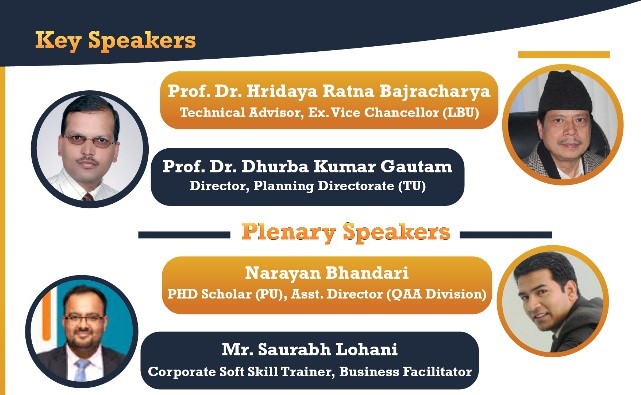MANUSCRIPT SUBMISSION
Before the submission of the manuscript, the researcher should take permission from the authorized institution as well as co-authors (if any). Author/s wishing to include figure, table or passages should have permission from the copyright owner/s. The study must be original work. The journal publisher will tolerate plagiarism below 5 per cent.
MANUSCRIPT OUTLINE
Title
Abstract
Key Words
- Introduction
1.1 Background
1.2 Literature Review
1.3 Research Gap
1.4 Research Objective
1.5 Research Question/Hypothesis (Optional)
- Materials and Method Used
- Result and Discussion
- Conclusion and Recommendation
- Acknowledgement (If any)
- References
- Appendices (Optional)
Font and Size: Times New Roman font, font size 16 for title, font size 14 for sub-headings, and 12 for texts.
Line Spacing: 1.15″
Margin: 1″ or 2.5 cm margins on all sides.
Paragraph: Indent all paragraphs 5 spaces or one tab and no space between the two paragraphs.
Page Number: Page number should be in the right top corner of the page in EVERY page of the paper, starting from the title page to the References page.
Citation and References: References must be prepared by following APA, MLA or Chicago style.
Abbreviations must be full spelled when it first appears in the text. Do not use “@”and “&” in the text.
CONTENT WRITING GUIDELINES
TITLE: The title of the paper should represent the main theme of the article. It should be appropriate for the intended audiences. It should be brief, simple, informative and understandable. Length of the title should not be more than 15 words and no abbreviations should be used in the title.
The author should give full name, address (current affiliation and position), qualification and email address for communication. If there are more than one author, the name and email of the corresponding author should be written separately in the article.
ABSTRACT: Abstract is an important part of the research paper. It is a glance of the paper texts. It should be in 150- 250 words, and it should summarize the purpose, methods, results, conclusions and implications of the paper. No abbreviation and citation should be used in the abstract. It should be written in a single paragraph.
KEY WORDS: Author should select and write 5-7 key words which represent the main theme and contents of the whole article. The list of key words should be presented alphabetically and they must be typed after the abstract.
INTRODUCTION: This section should present context, problem statement, research question or hypothesis, significance, contribution to the study area of topic precisely. The writing should be very simple, clear, and understandable with emphasizing the importance of the topic.
Introduction section can be presented into the following major parts:
Background: Introduce the topic with defining the ideology of research topic theoretically.
Existing Knowledge: Review the related literature and identify the current knowledge of the topic being studied.
Research Gap: Review of literature in related field of study explores practices been done and gives clear direction what needs to be done.
Purpose of Research: Purpose of the research or main objective should introduce precisely with logical explanation.
MATERIALS and METHOD USED: Author should briefly describe the research design, setting of the study, study population, sample size, sampling design, nature of data and data collection strategies, tool for the study and data analysis plan clearly. The materials and method applied in the study should be scientific and systematically described.
RESULT and DISCUSSION: The results of the study should be presented here. The main data need to be presented in tables, graphs, and charts as evidence with summarizing meaning and interpretation of the numeric value in the text form. The findings should be in track with the research objective and design.
CONCLUSSION and RECOMMENDATION: The major findings should be presented in summarized form with addressing the research questions. The author needs to critically present the summary conclusion, major findings, newness, uniqueness and added knowledge as well as deviated from existing established knowledge. S/he should give the implications of findings and recommendations for the further study.
ACKNOWLWDGEENTS: The author could thank and mention those institutions and persons who contributed to the accomplishment of the study.
REFERENCES: Following format for citation and references should be followed:
APA (American Psychological Association) might be followed for Education, Psychology, Commerce and Management, Science stream, and Humanities
MLA (Modern Language Association) style might be followed for Humanities group
Chicago/Turabian style might be followed History and the Fine Arts stream.
APPENDICES: The Author can add important appendices as evidence (questionnaire, secondary table, picture, figure etc.) not more than 2 pages.



